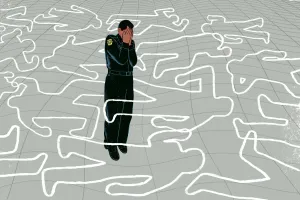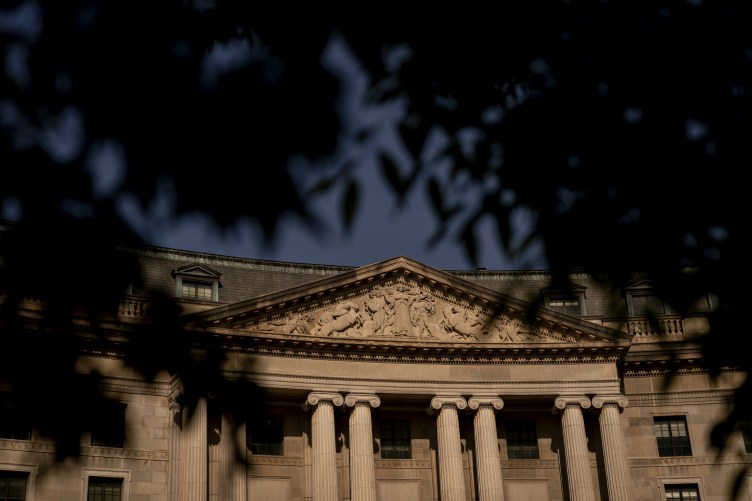Since 2005, the Orlando Fire Department has trained its paramedics on how to work with police officers to rescue victims from active shooter situations. In 2013, administrators began updating the department’s policy and buying equipment.
But the project wasn’t finished until after the June 12, 2016, shooting at the Pulse nightclub. During the event, police officers asked for the Fire Department to come inside Pulse. But with no policy in place to allow for that, and bulletproof vests sitting untouched at Fire Department headquarters, those calls went unanswered.
WMFE and ProPublica reviewed hundreds of pages of documents and emails obtained through a public records request, and interviewed more than a dozen firefighters to find out what happened.
2005: The Orlando Fire Department conducts its first joint training with the Orlando Police Department for a planned rescue task force, a team of paramedics in bulletproof vests escorted by police into dangerous situations to get victims out. From 2010 to 2013, three more joint training drills are held.
2013: Anibal Saez Jr., an assistant chief, is put in charge of updating the Orlando Fire Department’s active shooter policy before another joint training drill. He says he stopped working on it when he realized there was another group tackling the same topic. “They were, for lack of a better term, a little gun-shy about how aggressive we were gonna get,” Saez said.
August-September 2013: Fire Department lieutenants conduct briefings with the police, talking about how to establish rescue task force teams and how to form a unified command during an active shooter incident.
Feb. 6, 2015: Saez is again appointed project manager for the active shooter policy. “I completed a draft about 2 years ago,” Saez wrote to administrators.
Feb. 17, 2015: Roderick Williams is announced as Orlando’s next fire chief. He takes over in April.
March 5, 2015: David Arnott, a special assistant to Orlando Mayor Buddy Dyer, emails Saez asking for details on specific equipment before requesting money from the city of Orlando for bulletproof vests. Arnott is also a SWAT team training coordinator with the Police Department.
March 17, 2015: Saez sends an updated draft of the active shooter policy to incoming Fire Chief Williams and the rest of his senior staff, saying he has a “dream team” to get the policy and standard operating procedures in place. He has a schedule of events to test out bulletproof vests during an active shooter exercise and review the vests’ performance after. The plan is to have the entire department trained by the end of the year. He warns everyone to keep the policy secret because there may be resistance. “I’m counting on you to be rumor control by not sharing this information.”
April 2, 2015: A day after Williams takes office, Saez is pulled off the project. Deputy Chief Russell “Rusty” Nail emails Williams and the senior staff informing them that Assistant Chief Ian Davis will take over, given Saez’s reassignment back to working at a fire station. Saez responds by telling the group, “I’m just trying to let you know that I’m trying to keep everything flowing.” Williams replied, “Thank you for the update on the project.”
May 15, 2015: Nail sends an email to Williams with price quotes for body armor. “Please find attached the quotes to outfit [Orlando Fire Department] to become nationally compliant with Active Shooter initiatives.” The Orlando Fire Department and Orlando Police Department want to start training in summer.
June 9, 2015: Manny Soto, Orlando’s emergency manager, sends an email to Williams and his senior staff with guidelines from the U.S. Department of Homeland Security on dealing with an active shooter. He flags Page 19, which encourages EMS and fire personnel to use medics in bulletproof vests, guarded by police, to go in before the shooter is caught or killed. “Evacuation of the injured … may help improve survivability of victims.”
June 16, 2015: Williams emails Nail to say City Hall had denied the funding request. He directs a deputy chief to find funding within their budget. Orlando’s mayor later said this is standard practice for unscheduled budget requests in the middle of a fiscal year.
July 7, 2015: The city of Orlando spends about $33,000 on bulletproof vests, helmets, headlamps and medical kits for the Fire Department.
Sept. 16, 2015: Deputy Chief Rich Wales asks if the Fire Department has officially decided to adopt the Swift Assisted Victim Extraction program, or SAVE, as its active shooter model. SAVE is a form of rescue task force, and it is considered by some as the “minimum standard” because it focuses only on rescuing easy-to-find victims in dangerous situations. Some departments go further, embedding paramedics into SWAT teams who go after shooters. Two deputy chiefs reply back that, yes, they’ve adopted a version of the SAVE program. However, at this point, there is no new policy or standard procedures in writing*,* showing the open confusion within the department*.*
March 30, 2016: With a multi-agency training drill just completed, Special Operations District Chief Randahl “Randy” Dickson emailed EMS Assistant Chief Hezedean “Dean” Smith: “I am not aware of a Active Shooter [policy] at this time. There was a committee that was responsible for the [policy], however, I am not sure whether one was created and approved.” Smith wrote back, copying senior staff: “This important operation (Active Shooter) needs some directions. Training sessions start next week, but there are still unanswered questions.” Deputy Chief Keith Maddox replied: “We should probably create a policy or [standard operating guidelines] for this before we begin training.”
April 6, 2016: Williams replied with four words: “Update on active shooter?”
April 17, 2016: Smith wrote back to Williams. “Did anyone respond to your request for an update?”
June 12, 2016: During the Pulse nightclub shooting, 49 people are killed and 53 are injured. A joint command is not formed with police and fire, and a rescue task force does not enter the club.
Read More
June 27, 2016: Five members of the Fire Department’s upper-level management meet. The topic? “Active shooter project discussion.”
July 13, 2016: Smith sends an article about the Pittsburgh EMS becoming embedded with the SWAT team to Williams. Williams bristles at a line in the piece that questions how fast EMS should respond: “Injured patrons trickled out for nearly three hours until authorities sent in SWAT officers about 5 a.m. to rescue the remaining wounded. Victims died in the interim.” Williams writes back: “They don’t have a ideal (sic) what was going on during that time. Slanderous statement…”
Oct. 28, 2016: A two-page memo is sent to all firefighters in the department. During an active shooter incident, firefighters will stage at a safe distance until a district chief arrives with bulletproof vests. The chief on scene will coordinate rescue operations at the direction of the Orlando Police Department, and a rescue task force will be established. At this point, just two vehicles in the city carry bulletproof vests and gear.
November 2016: An additional order of vests and other equipment are bought for about $118,000. This gives the department enough vests to cover the 150 firefighters working on any given shift.
January 2017: Ninety-eight percent of the Orlando Fire Department gets trained to assist the Orlando Police Department as a rescue task force.
March 31, 2017: The Orlando Fire Department distributes a memoabout how the department will respond to active shooters and scenes of violence. Staff working on two vehicles in the city would be the first to be called in as a rescue task force, but other firefighters may also be required to go in.
April 6, 2017: Williams and Dyer announce the new protocol and vests at a press conference.
June 11, 2018: Saez, the assistant chief who was taken off the active shooter project in 2015, emails hundreds of firefighters who had responded to Pulse. “Everyone of you, from the Com Center to the troops on the scene are still dealing with the hang-over and demons,” Saez wrote. He said if the Fire Department is sued, “Remain proud of what you accomplished and the lives you saved and impacted. Any percieved (sic) shot taken at OFD, is not at you.” The department responds by revoking his ability to send department-wide emails and writing him up.
July 18, 2018: Saez files a hostile work environment complaint with the city’s Human Resources Department against the fire chief and the deputy chief who wrote him up. Saez retired in September. The city of Orlando says it is “currently reviewing the facts of this case as it is active and ongoing.”











